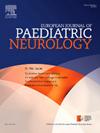Key lessons from the first international treatment eligibility committee: the case of metachromatic leukodystrophy
IF 2.3
3区 医学
Q3 CLINICAL NEUROLOGY
引用次数: 0
Abstract
Background
Treatment decisions in metachromatic leukodystrophy (MLD), a rare life-threatening neurological disease, are challenging. Hematopoietic stem cell transplantation or autologous stem-cell-based gene therapy can be life-changing but come with uncertainties, risks, and high costs. To address this, the international MLD treatment eligibility panel was established in collaboration with the European Reference Network on Rare Neurological Diseases. The panel reviews and discusses individual MLD cases and provides consensus-based recommendations on whether to treat and which treatment modality. The goal is to streamline international care and treatment counseling by providing uncomplicated access to expert opinion.
Methods
The panel operates according to a published standard operating procedure and was evaluated between September 2021–2024. Case data were recorded in a Castor EDC-based system and, with consent, included in the MLD Initiative (MLDi) patient registry. Physicians' experiences were assessed via EUsurvey, and patients’ feedback was collected through an MLDi registry survey.
Findings
The panel discussed 43 cases, recommending treatment in 20, abstaining in 19, and reaching no consensus in 4. Open questions regarding cognitive function and lack of outcome data caused challenges in treatment recommendations in late-onset MLD patients. All treatment recommendations were followed. Physicians reported positive experiences with the panel.
Interpretation
The MLD treatment eligibility panel demonstrates how international expert advice can be streamlined across Europe for a rare disease like MLD, where disease-specific guidelines are still in development. By balancing complex clinical, social, and ethical parameters, the panel aids in encouraging appropriate use of innovative and costly therapies and guarantees accessibility to expert advice irrespective of country of origin.
第一届国际治疗资格委员会的主要经验教训:异色性脑白质营养不良病例
异色性脑白质营养不良(MLD)是一种罕见的危及生命的神经系统疾病,治疗决策具有挑战性。造血干细胞移植或自体干细胞基因治疗可以改变生命,但存在不确定性、风险和高成本。为了解决这一问题,与欧洲罕见神经疾病参考网络合作成立了国际MLD治疗资格小组。该小组审查和讨论个别MLD病例,并就是否治疗和采用何种治疗方式提供基于共识的建议。目标是通过提供简单的专家意见,简化国际护理和治疗咨询。方法采用已公布的标准操作程序,于2021年9月至2024年9月进行评估。病例数据记录在基于Castor edc的系统中,并经同意纳入MLD倡议(MLDi)患者登记册。通过e篡位调查评估医生的经验,通过MLDi注册调查收集患者反馈。小组讨论了43例,建议治疗20例,弃权19例,未达成共识4例。关于认知功能和缺乏结果数据的开放性问题对迟发性MLD患者的治疗建议提出了挑战。所有治疗建议均被遵循。医生们报告了专家组的积极经验。MLD治疗资格小组展示了如何在整个欧洲简化针对MLD等罕见疾病的国际专家建议,其中疾病特异性指南仍在制定中。通过平衡复杂的临床、社会和伦理参数,该小组有助于鼓励适当使用创新和昂贵的疗法,并保证无论来自哪个国家都能获得专家咨询意见。
本文章由计算机程序翻译,如有差异,请以英文原文为准。
求助全文
约1分钟内获得全文
求助全文
来源期刊
CiteScore
6.30
自引率
3.20%
发文量
115
审稿时长
81 days
期刊介绍:
The European Journal of Paediatric Neurology is the Official Journal of the European Paediatric Neurology Society, successor to the long-established European Federation of Child Neurology Societies.
Under the guidance of a prestigious International editorial board, this multi-disciplinary journal publishes exciting clinical and experimental research in this rapidly expanding field. High quality papers written by leading experts encompass all the major diseases including epilepsy, movement disorders, neuromuscular disorders, neurodegenerative disorders and intellectual disability.
Other exciting highlights include articles on brain imaging and neonatal neurology, and the publication of regularly updated tables relating to the main groups of disorders.

 求助内容:
求助内容: 应助结果提醒方式:
应助结果提醒方式:


